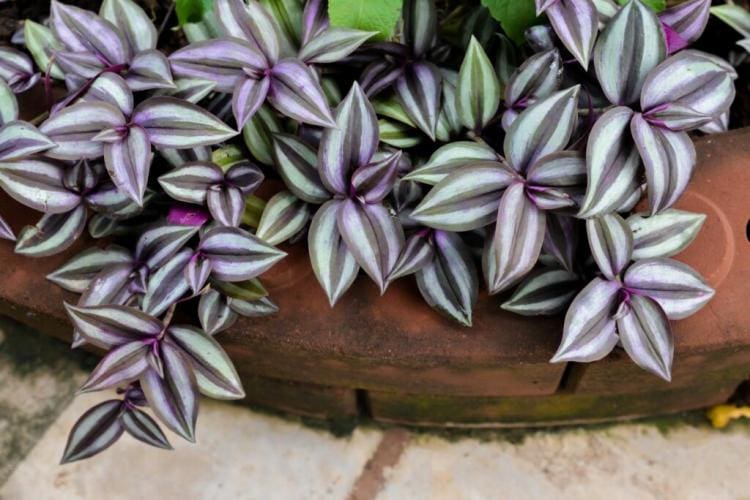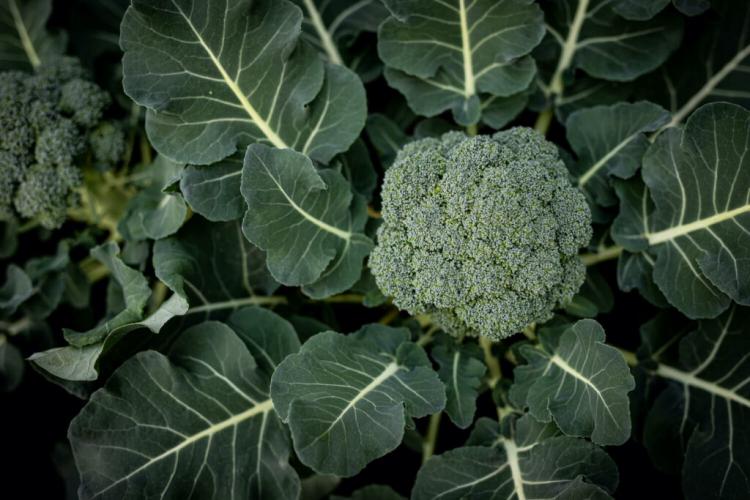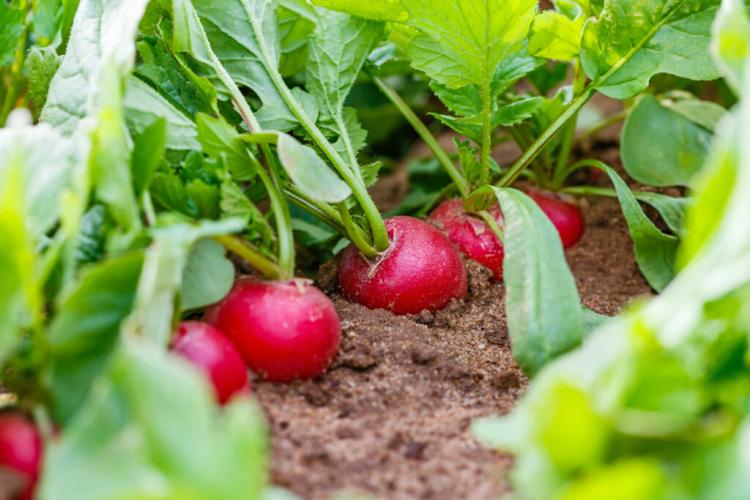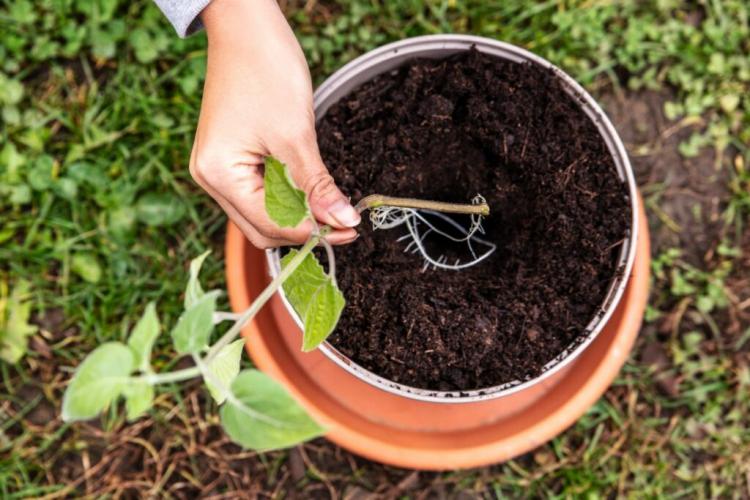Gardening in March: Everything at a glance!
In March, when the garden suddenly begins to bloom, gardening really starts again. You can find out which tasks are waiting for us in the garden in March in our overview.
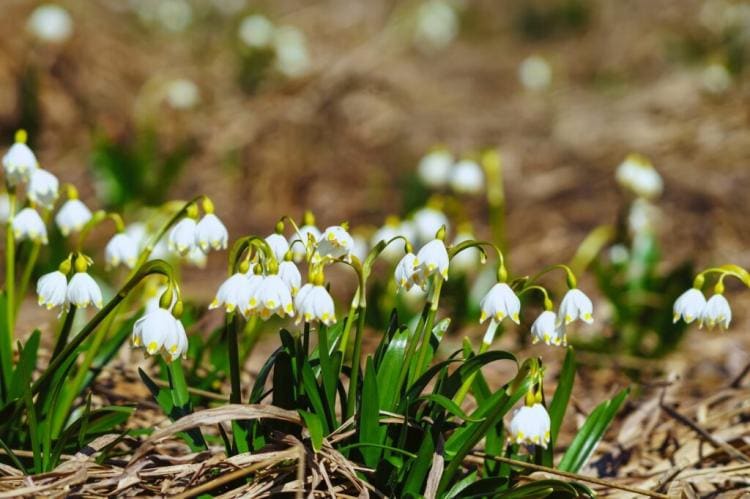
When the first spring cups bloom, spring is not far away [Photo: Rejdan / Shutterstock.com]
In March it will be official: Spring has begun and the garden is slowly waking up from its hibernation. However, this not only means that we can look forward to numerous spring bloomers, but also that the garden must now be carefully prepared for the coming gardening year. We’ll show you what gardening March brings with it.
The vegetable garden in March
Table of Contents
During the winter the vegetable patch is often only sparsely overgrown – this changes suddenly in March: Numerous types of vegetables are now in the starting blocks, waiting eagerly to be sown or planted. We have summarized for you here which work in the vegetable garden you should not miss in March.
What can you sow in March?
While only a few plants could be sown in January and February, March brings with it a whole series of plants that now want to start their lives. Warmth-loving plants such as tomatoes ( Solanum lycopersicum ) and broccoli ( Brassica oleracea var. Italica ) can be grown wonderfully on the windowsill this month. More robust vegetables such as parsnips ( Pastinaca sativa ), carrots ( Daucus carota ) and spring onions ( Allium fistulosum ) can easily be sown straight into bed in March.
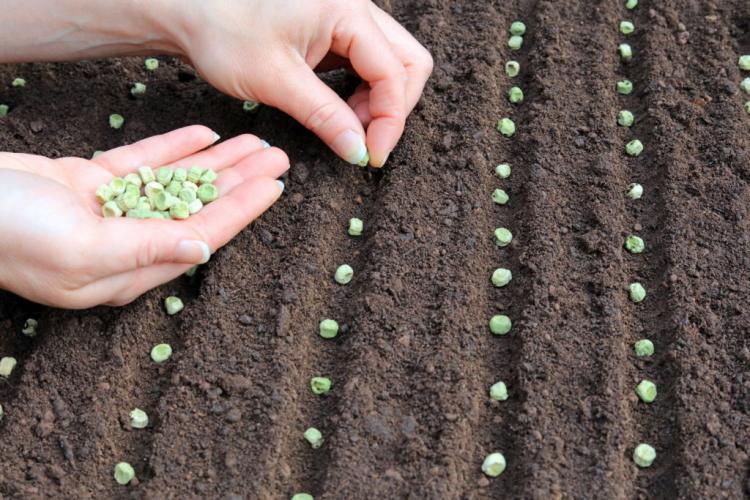
You can also sow peas as early as March [Photo: Dean Clarke / Shutterstock.com]
What can you sow in March?
Sow on the windowsill: Andean berries, artichoke, aubergine, broccoli, tiger almond, fennel, kohlrabi, melon, paprika, romanesco, beetroot, lettuce, celery, tomatoes
Sow directly into the bed: broad beans, cauliflower, peas, oat root, carrots, head cabbage, spring onions, parsnips, pores, radishes, lettuce, black salsify, spinach, savoy cabbage, onions
Tip: To ensure that your plants are ideally cared for, you should use high-quality soil – such as Plantura organic herb and seed soil – when sowing. This not only provides the young plants with all the nutrients they need for healthy growth, but is also peat-free and therefore particularly climate-friendly.
What to plant in March
Gardening in March is not just about sowing new plants: Those who have already been busy in January and February can fill their beds with previously grown plants in March. Young lettuce plants, but also preferred cauliflower ( Brassica oleracea var. Botrytis ) and radish ( Raphanus sativus ) look forward to a place outdoors in mild weather or under a protective fleece or foil tunnel. In particularly mild locations, the first new potatoes ( Solanum tuberosum ) can be planted in the bed at the end of March.
What to plant in March
In the bed: cauliflower, broccoli, new potatoes, kohlrabi, radish, red cabbage, lettuce, celery, chives, savoy cabbage, pak choi
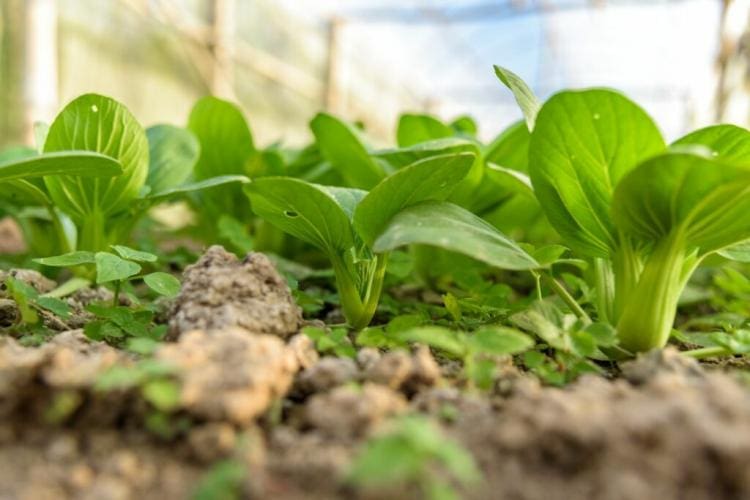
Pak Choi can also be sown as baby leaf for harvest at the end of March [Photo: Tofudevil / Shutterstock.com]
Seasonal vegetables in March
Not only sowing new plants is on the plan in March. The month is also the right time to harvest the last winter vegetables in the garden. But the first plantings from this year are already showing their fruits – in particular the fast-growing radishes ( Raphanus sativus var. Sativus ) can be harvested from the greenhouse from early to mid-March.
Which vegetables can be harvested in March?
In the bed: chicory, lamb’s lettuce, parsnips, leeks, spinach
In the greenhouse : radishes, celery bulbs
Even if you do not have your own garden, it is still worth buying seasonal fruit and vegetables – for the sake of the environment. You can find out which fruit and vegetables are in season and when in our large seasonal calendar.
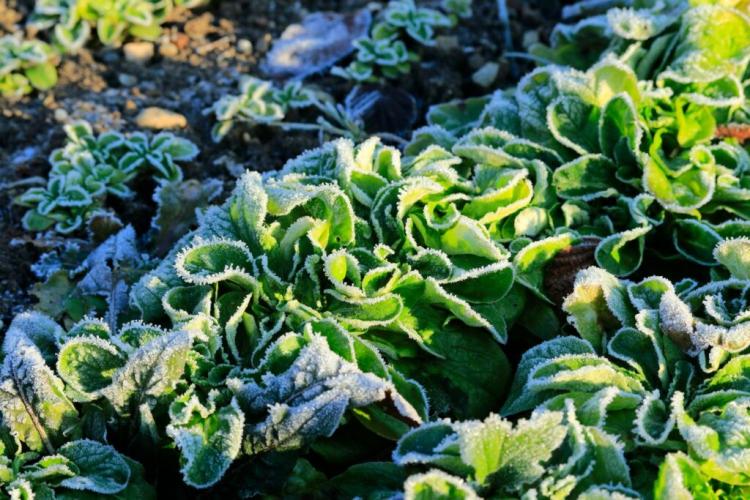
Lamb’s lettuce is still on the field from the autumn sowing [Photo: theapflueger / Shutterstock.com]
Further work in the vegetable garden
In addition to sowing and harvesting vegetables in March, there are also numerous other tasks to be done in the kitchen garden. We have summarized the most important ones for you here.
Cutting herbs: Perennial herbs such as thyme ( Thymus vulgaris ), rosemary ( Rosmarinus officinalis ) and mountain savory ( Satureja montana ) also need regular maintenance cuts. When gardening in March, the aromatic herbs are shortened by around a third with secateurs to encourage the rich branching.
Planning the garden year: The garden year really starts in March. If you want to get the most out of your kitchen garden, you should therefore sit down at the beginning of March and draw up a planting plan. Here you can determine exactly which plants should be planted when, where and in which order – in this way you can optimally exploit the positive effects of plant neighbors and at the same time prevent the spread of diseases and the leaching of the soil.
Prepare beds: So that the new residents feel at home in the garden, it is particularly important in March to prepare the beds sufficiently: Loosen the soil well and then work compost and horn shavings into the substrate. This means that the soil is optimally prepared for the new plants to move in.
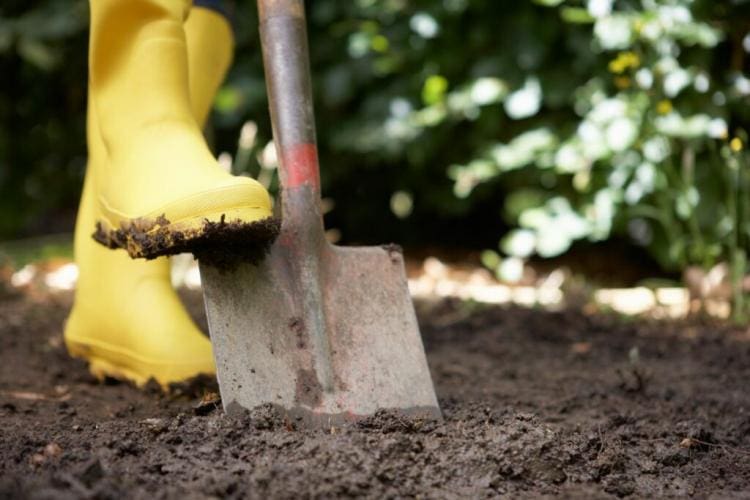
Preparation is essential for a bountiful vegetable harvest [Photo: Monkey Business Images / Shutterstock.com]
The ornamental garden in March
The ornamental garden in March is a particularly beautiful sight: Numerous early bloomers suddenly emerge from the ground and enchant the bed with their bright colors. Unfortunately, in March you should not only enjoy the splendor of the flowers, but also prepare your ornamental garden for the new gardening season: In the gardening month of March, new flowers are planted, the seeds are sown diligently and one or the other bush is pruned.
What blooms in March
In March, early bloomers and signs of spring have their purest bloom time. Numerous now classic early bloomers such as crocus (Crocus), Christmas rose (Helleborus niger) or daffodil (Narcissus pseudonarcissus) appear. The pansy ( Viola x wittrockiana ) is one of the flowers that bloom in March. The first early flowering shrubs such as the spring spar ( Spiraea thunbergii ) or the gingerbread tree ( Cercidiphyllum japonicum ) also show up in their blossoming splendor.
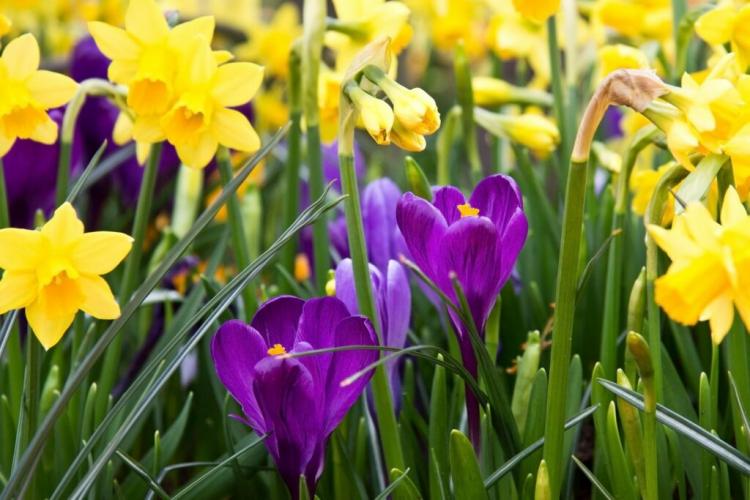
Early bloomers like daffodils and crocuses light up March [Photo: Poly Liss / Shutterstock.com]
What flowers bloom in March
Flowers and perennials: Christmas rose, daisy, golden star, pasque flower, crocus, lark spur, dandelion, fairytale cup, march violet, daffodil, primrose, snowdrop, cowslip, pansy, winterling and others
Shrubs and woody plants: spring spar, hazel, gingerbread tree, ornamental Oregon grape, snow forsythia, star magnolia, winter jasmine, winter Oregon grape and others
What flowers can you plant in March?
If you want to look forward to an ornamental garden in bloom in summer too, you shouldn’t rest in March: so that you can admire colorful flowers in the next few months, you should use the time to plant flowers in March. Annual plants such as the garden foxtail ( Amaranthus caudatus ) or the gypsophila (gypsophila) can now be brought forward on the windowsill. Other flowers such as marigolds ( Calendula officinalis ) and cornflowers ( Centaurea cyanus ) can even be sown in the bed in March. Driven tulips ( Tulipa gesneriana ) can also be planted outdoors in March.
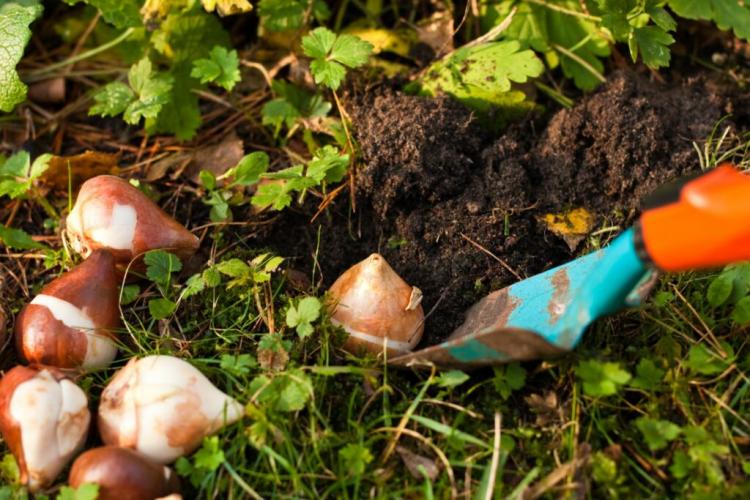
Planting tulips in March is still possible [Photo: Cornelia Pithart / Shutterstock.com]
What flowers do you plant in March?
Sow on the windowsill: Begonias, garden foxtail, carnations, bell vines, busy lizards, snapdragons, sunflower, gypsophila, marigolds
Sow in the bed: sweet pea, corn poppy, cornflower
Plants in the bed: tulips
More garden work in the ornamental garden
Of course, not only sowing flowers in March is on the agenda. Now is also the perfect time to plant ornamental trees and to fertilize the beds for the first time. Here we have summarized all the important work for the month of March for you.
Rosen cultivate and fertilize: More often Blooming roses (Rosa) should be pruned again sharply in March, so they wear in summer lush flowers jewelry. After pruning the roses, be sure to reward them with a mixture of horn meal and compost to help them grow. In addition, if roses were piled up in winter, they should be exposed again in March.
Caring for hydrangeas: In order for hydrangeas to show their magnificent flowers again this year, you should do something good for them in March. Some hydrangea species benefit from pruning in spring. In addition, you should provide the hydrangeas between March and May with a high-quality, mainly organic long-term fertilizer, such as our Plantura organic hydrangea fertilizer, in order to ensure an adequate supply of nutrients.
You May Also Like Geranium Fertilizers
Prepare the garden pond: In March it will be time to bring the garden pond back into shape. This includes removing protective nets and removing foliage. In addition, the bank vegetation should now be cut back generously.
Share fall flowering perennials: Autumn Flowering perennials such as asters (Aster), Autumn Chrysanthemum (Chrysanthemum indicum hybrids) and cranesbill (Geranium hybrids) can be divided at best in March. After the plants have been carefully dug up, the root ball is carefully divided up with a spade or knife. The individual parts are then planted in their new place.
Tip: Combine the division with the fertilization of the perennials by working compost or an organic long-term fertilizer into the planting hole.
Checking the boxwood: The first overwintered caterpillars of the boxwood moth get to work in March. So start now with checking your boxwood plants and check whether you still have traps for the moth in the house. If you discover free-eating caterpillars in the Bux, you need to act quickly with the organic Plantura borer-free XenTari® in order to achieve the best possible effect.

Box trees should be checked regularly for pests [Photo: Marinodenisenko / Shutterstock.com]
The orchard in March
While the orchard brought work mainly through the pruning in winter, in March it is time to lean back in joyful anticipation of the flowering. Only the planting of new fruit trees in the garden is now particularly cheap in March.
Planting fruit trees: For berry bushes such as blackberries ( Rubus ), raspberries ( Rubus idaeus ), and currants ( Ribes ), March is exactly the right time to plant. But also fruit trees such as apricots ( Prunus armeniaca ), apples ( Malus ) or pears ( Pyrus ) can move into the orchard in March.
Rhubarb: When planting, the plant is happy to receive a portion of mainly organic fertilizer such as our Plantura organic tomato fertilizer. Manure and compost also help the plant get off to a good start into the new season.
Get your strawberries ready to go: Strawberries must be carefully tended in March so that they bear plenty of sweet fruit in summer. If not already done in autumn, this includes removing or replanting any offshoots and runners, pulling weeds, distributing fresh manure or compost and possibly spreading a layer of mulch.
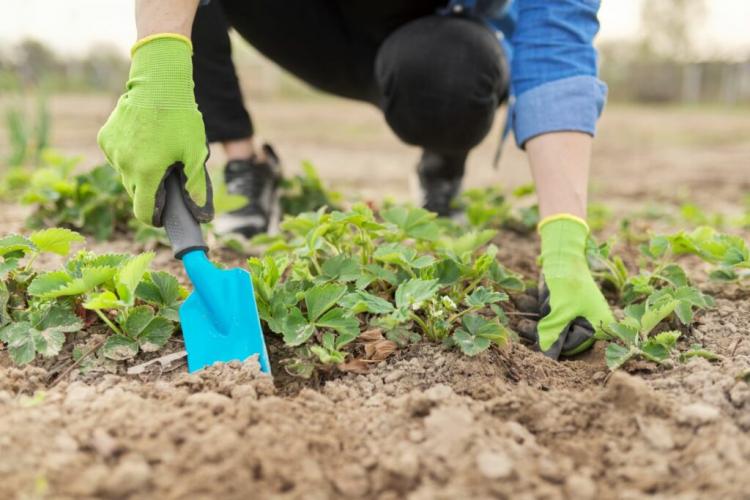
Strawberries have to be tended in March [Photo: VH-studio / Shutterstock.com]
The lawn in March
If the lawn hardly had to be taken into account in winter, the time for the first maintenance has come in March. Caring for the lawn after winter is essential if you want to look forward to healthy, green grassy areas in the current year.
Fertilize the lawn: Now is the time for the first lawn fertilization, ideally with a primarily organic lawn fertilizer such as our Plantura organic lawn fertilizer, as this not only has a long-term effect, but is also harmless for gardeners and pets.
Determine the pH value: It is advisable to determine the pH value of the soil in March. If the pH value is too low, it can lead to heavy moss infestation and the increased occurrence of various weeds in the lawn, while the vitality of the grass decreases. If the acid content is too high, liming the lawn can be useful, as this can bring the pH value of the soil back to an ideal concentration.
Mowing and scarifying the lawn: In March it will finally be time to get the lawn into shape again. When mowing for the first time, however, it is advisable to leave the lawn one to two centimeters higher than usual in order not to suddenly shorten blades of grass too much and thus increase the risk of sunburn. If you want to scarify the lawn, this is also the right time.
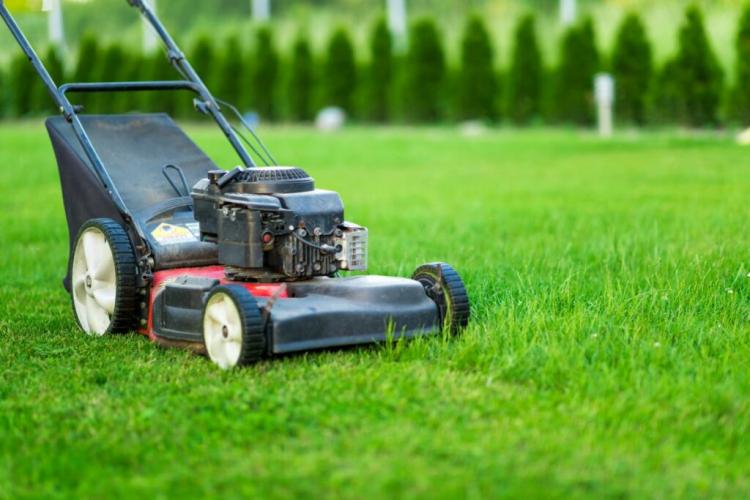
The lawn will be brought back into shape in March [Photo: topseller / Shutterstock.com]
Support garden animals and insects in March
In March, many animals feel the first spring fever. Blackbirds begin their territorial fights, while common toads make their way to their spawning grounds on mild nights. The first wild bees and other insects are now leaving their winter quarters and looking for food and nesting sites.
How to support garden animals in March:
- Plant more early bloomers as a food source for insects.
- Create insect hotel and bumblebee nest box.
- Drive carefully on warm nights and help common toads across the road. At speeds of over 30 km / h, amphibians die from the pressure wave in front of the car, even if they are not run over directly.
The balcony garden in March
A new season also begins in March for balcony gardeners. Many balcony plants need special attention in March so that they can show themselves in their full glory in summer. There are also numerous balcony flowers that provide bright accents in March.
Flowers for the balcony in March: In March, numerous blooming flowers provide admiring glances again. The colorful flowers of the rose primrose ( Primula vanilla ), daffodil ( Narcissus pseudonarzissus ) and pansy ( Viola x wittrockiana ) are particularly impressive. So that the balcony is also a feast for the eyes in early summer, you should not miss the sowing of new residents in March: some balcony flowers such as the magic bells ( Calibrachoa ), on the other hand, have to be sown in March so that they bloom appropriately for May.
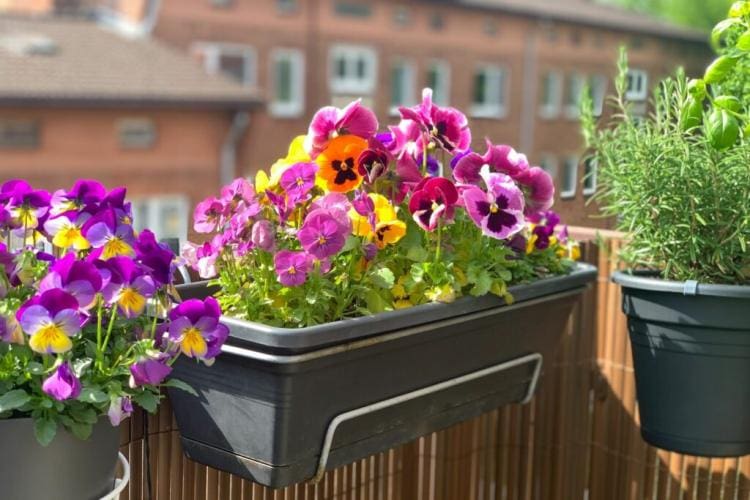
Pansies bloom as early as March [Photo: Lapa Smile / Shutterstock.com]
You Might also like Why Is My Calibrachoa Dying?
What flowers can be planted on the balcony in March?
Blooming in March: black clover, daffodils, rose primrose, pansy
Prefer in March: flower cane, dahlia, gladiolus, Canary nasturtium, morning glory, magic bells
Pruning geraniums: Geraniums that have spent the cold winter in a cool, bright room can slowly be prepared for their return to the balcony in March. To do this, the leafless shoots of the plant are cut back to two to four eyes. The flower is then repotted and placed in a bright window seat until it is allowed to take its place on the balcony in frost-free weather.
Harden potted plants: Potted plants that have overwintered in the house should be slowly accustomed to their old place again at the beginning of March. On frost-free days, they can stand in a shady, sheltered place outdoors during the day. Gradually, you can expose the plants to sunlight for longer so that they can acclimate slowly without getting sunburn.
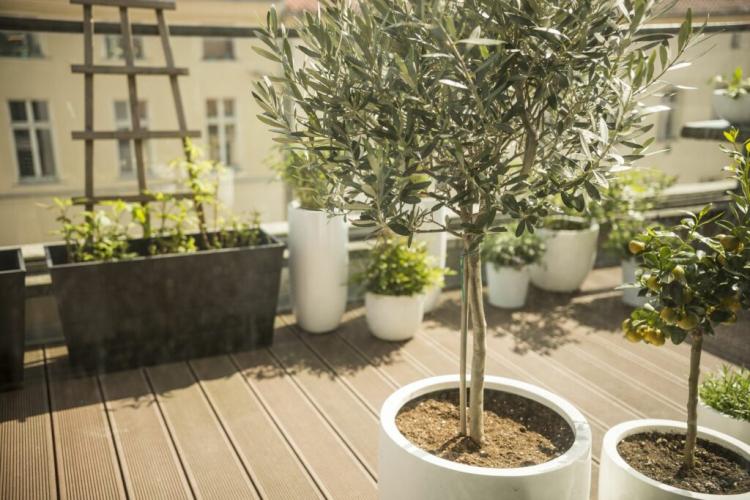
Potted plants have to slowly get used to sunlight [Photo: Ania K / Shutterstock.com]
Properly care for indoor plants in March
Indoor plants are an absolute must for most people and contribute significantly to the feel-good climate in the house. So that the beautiful houseplants can continue to present themselves in their full splendor, it is particularly important at the start of the growing season in March to give your plants sufficient attention.
Fertilize indoor plants: The start of the growing season in March not only means that the indoor plants are slowly starting to grow again, but also that the green roommates need more nutrients. For this reason, fertilizing the plants in March is particularly important: A good plant fertilizer, such as the Plantura organic indoor & green plant fertilizer, provides the plant with all the important nutrients.
Cleaning leaves: House plants with large leaves, such as window leaves ( Monstera deliciosa ) or palm trees, are often particularly susceptible to dust deposits in winter. That’s why spring cleaning is in order for spring: Use a damp, soft cloth to remove dust and dirt from the leaves and make the plant shine again. Smaller plants can also be showered with lukewarm water. Incidentally, cacti and succulents also benefit from a clean surface – instead of using water, however, the dust should be removed with a fine brush.
Repotting indoor plants: At the beginning of the growing season, you should always check your indoor plant to see whether there is still enough space in the pot. About every three to four years it is time to change the pot in March – this way the plant not only has new space for its growth, but can also look forward to fresh substrate.
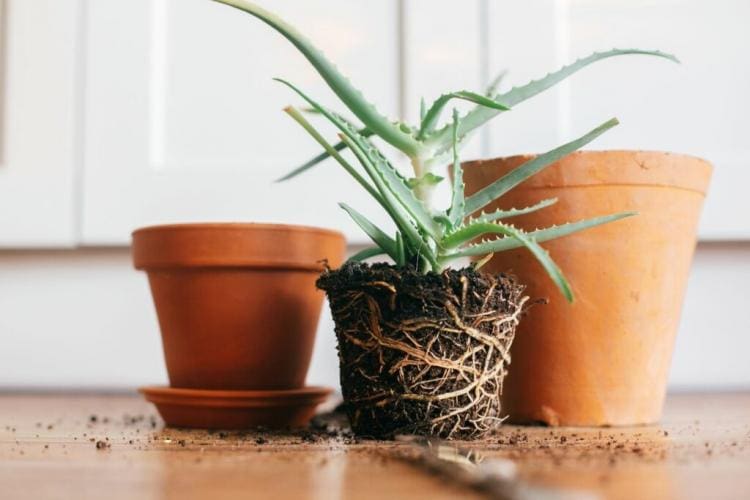
March is the right time to repot [Photo: Bogdan Sonjachnyj / Shutterstock.com]
After March, April will come soon – you can find out what you need to consider when gardening this month in our article “Gardening in April”.



